Twenty Years of UTSA Downtown: An Archival Exploration
This post was co-written by archives student assistant, Alesia Hoyle.
This fall marks twenty years of the UTSA Downtown Campus, and on November 13, 2017, we in the University Archives had the chance to help the UTSA community celebrate this milestone.
Our involvement began back in September, when a friend of Special Collections, K.C. Gonzalez, (Director of Communications and Special Projects in the Office of the Senior Vice Provost for Academic & Faculty Support), contacted us. She shared details about what the planning committee envisioned for the celebration. At her request, we identified documents that gave background information on the founding of the Downtown Campus. We scanned these items so that she could share these resources among the planning committee and the speakers.
The funny part is, most of the historic documents that we shared with K.C. were from the Office of the Senior Vice Provost for UTSA Downtown collection (UA 04.03.01.02). Earlier this year we had coordinated with K.C. to transfer those records to the University Archives. The centerpiece of this collection is eight scrapbooks that were compiled by the Senior Vice Provost, Dr. Jesse Zapata, and his staff for more than two decades.
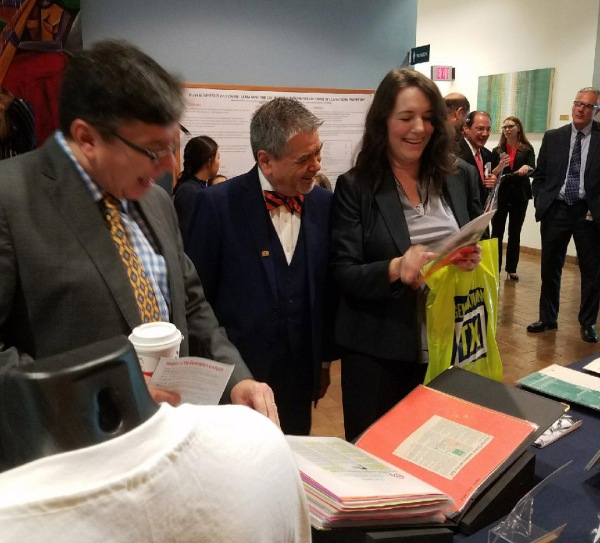
Dr. Jesse Zapata, Senior Vice Provost for Academic & Faculty Support (center, wearing bow tie), proudly shows off archival materials about the UTSA Downtown Campus.
K.C. also requested photographs of the campus through the years. Searching for photographs is probably my favorite type of patron request because I enjoy the challenge of digging through our large photo collections in order to find the most visually compelling images that are relevant to the project. In this case, I selected 150 pictures that show the evolution of the Downtown Campus dating back to 1993, when the Fiesta Plaza Mall was demolished, to the present day.
K.C. further asked if Special Collections would be interested in preparing a display of archival material at the event. We were eager to agree. So much of our work happens behind the scenes that it is always exciting to bring our stuff out for show and tell with the public.
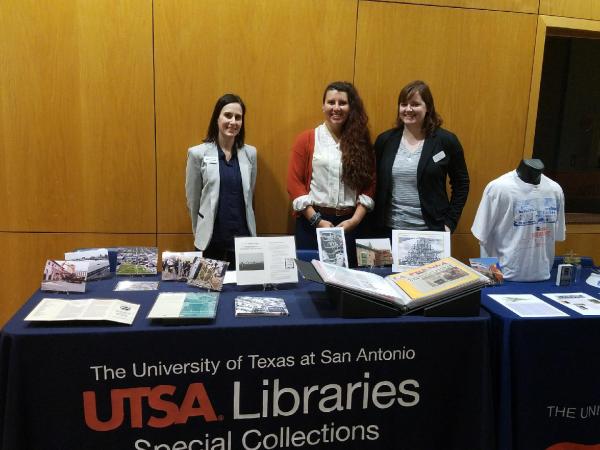
Special Collections staff Amy Rushing, Alesia Hoyle, and Kristin Law.
Finally, this milestone was a good catalyst for us to curate an exhibit for the Downtown Library. We selected some of our favorite items and arranged them into smaller vignettes for each of the four display shelves. We installed the exhibit after Monday evening’s event, and although we didn’t have a prime view for the fireworks, we did get to celebrate with some of the 20-foot orange cake!
We were so grateful to have a public opportunity to showcase archival materials from our collections. The material chosen for display at the event and the library exhibit expresses pride of place, and focuses on showing why the campus was established, how it fits into the city, and the unique architectural style of the buildings.
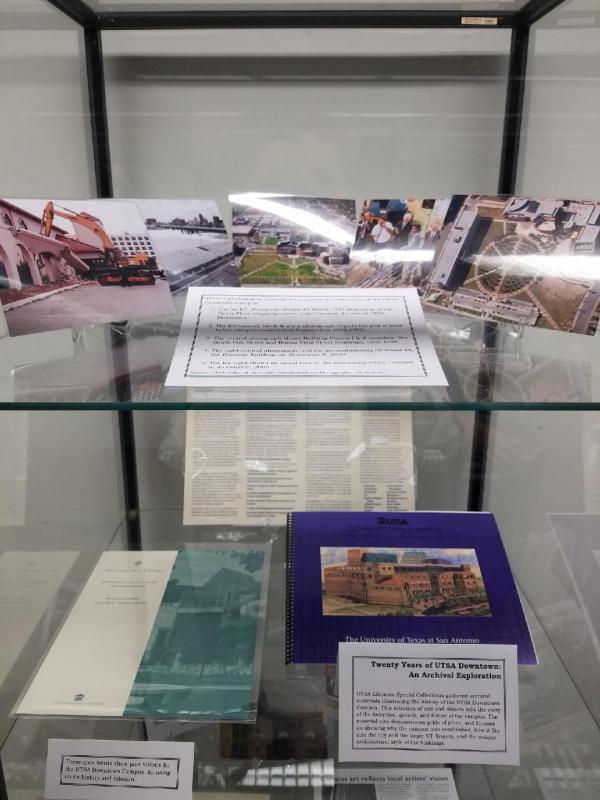
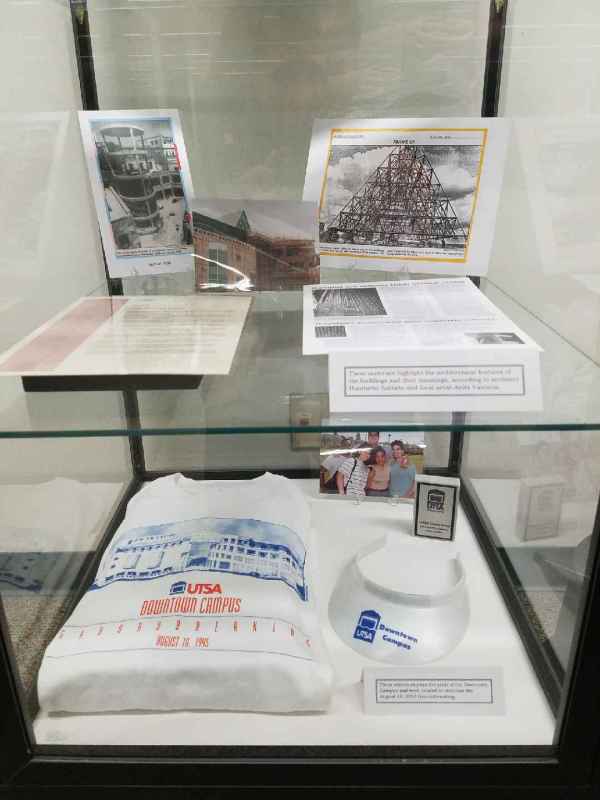
The exhibit we installed illustrates the history of the Downtown Campus.
The story of the Downtown Campus began as a need to provide an advanced four-year public education institution situated in the heart of San Antonio for the multi-cultural communities of South Texas. The city wanted to offer its people located within its urban setting an opportunity to fulfill their educational dreams without having to travel outside of Loop 410.
To address this absence, Bill Miller Bar-B-Q Enterprises, Inc. bought the property between West Durango Boulevard and Buena Vista Street, and gifted the 10 acres for the construction of the downtown campus. The campus was built in three phases: Phase I, the Frio Street building, completed in July 1997; Phase II, the Buena Vista building, completed in January 1999; and the Durango building, which was completed in September 2001.
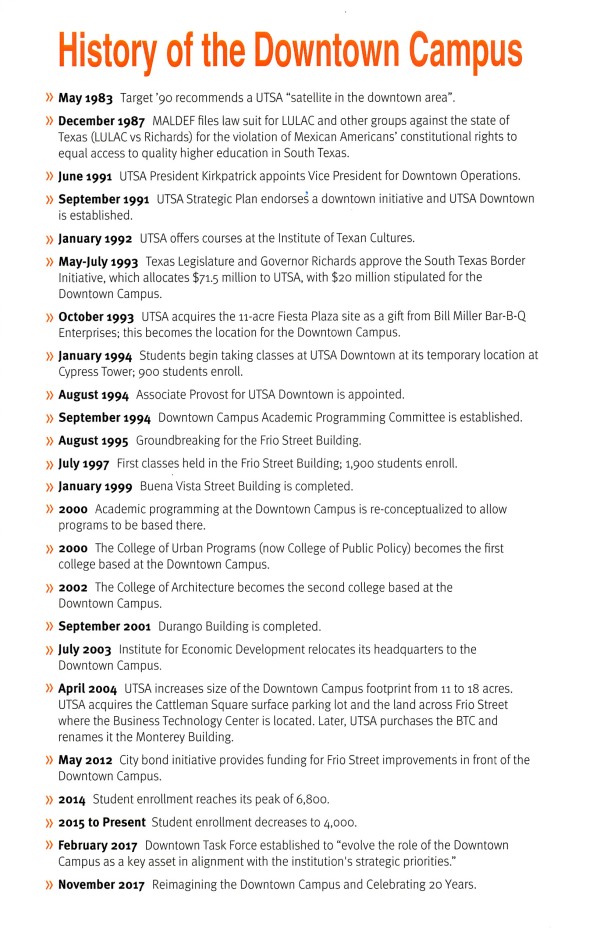
A timeline was included in the program for the anniversary event.
Throughout the years, one of the defining characteristics of the downtown campus has been its eye-catching architecture. The architect for the buildings was Humberto Saldaña & Associates Inc. They developed a plan to functionally and aesthetically connect to San Antonio’s core. This can be seen in the choice of material fabric for the three buildings. Architect Humberto Saldaña explained, “the new UTSA Downtown Campus [is] a bridge that spans the past, present and future, a bridge between UTSA and the diverse neighborhoods and cultures of San Antonio.” He further elucidates the Frio Street Building being “an architectural statement unique to the city,” in that the forms and materials are reflective of some of San Antonio’s most significant buildings. The material fabric consists of native limestone, red granite, brick, sandstone, and glazed tiles, which are employed to create this connecting thread.
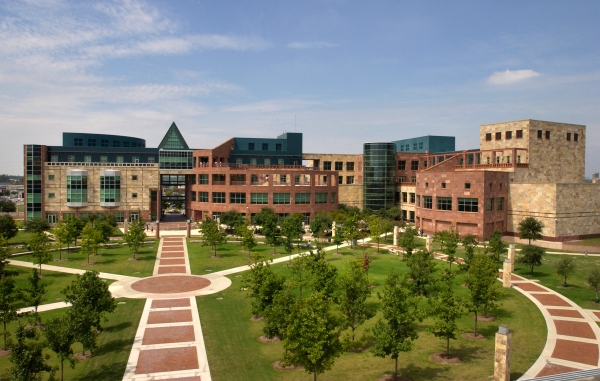
View of the Downtown Campus looking west, 2004. Source: UTSA Office of University Communications Photographs, UA 16.01.01.
We were delighted that so many of San Antonio’s civic leaders attended the 20th anniversary event and paused to take a look the materials from the archives. We were glad to share our treasures with Humberto Saldaña, Nelson Wolfe, Joe Bernal, Leticia Van de Putte, and many others.
In addition to the fireworks, the highlight of the celebration was President Taylor Eighmy’s unveiling of ideas for the future of the Downtown Campus. We’re excited to see what the future holds for the campus.


